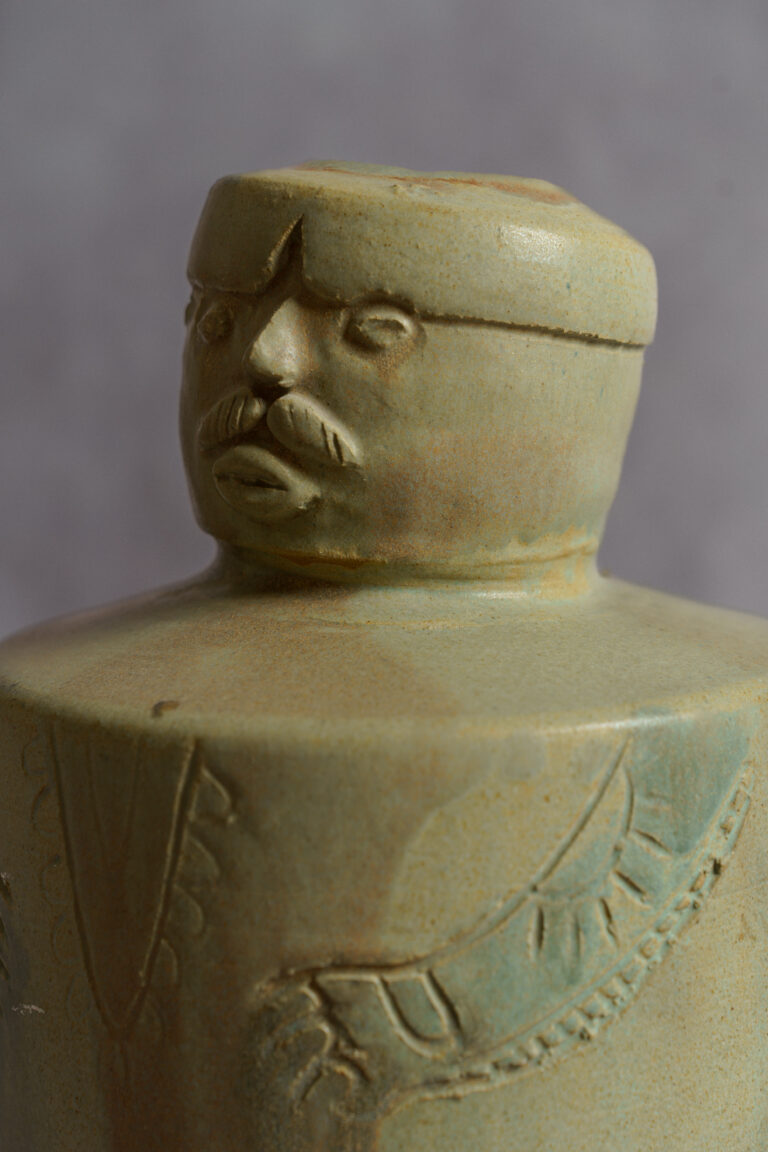“Black milk of daybreak we drink it at evening we drink it at midday and morning we drink it at night”
-Paul Celan, Deathfuge
“Blacker in black, am I more naked. Apostate only am I true. I am you, when I am I.”
-Paul Celan, In Praise of Distance
Part journey, part memoir, at once hallucinatory and monumental, few works of art explore the immersive and transformative properties of blackness and night with more intensity and imagination than Chittrovanu Mazumdar’s Nightskin, a three room installation shown to critical acclaim at Dubai’s 1×1 Gallery in 2009. It is a work of remarkable ambition, designed by Mazumdar with meticulous attention to detail and an acute awareness of the sensory impact, extending to all the nuances of peripheral vision and subliminal effect. Incorporating photography, video, sculpture, sound and light, it consistently challenges the senses and the intellect, without narrative yet retaining an aesthetic and conceptual coherence.
![]()
Nightskin is bound together by Mazumdar’s exploration of the metaphysical properties of black, a subject of fascination throughout his career. In his conception black becomes a transcendental resource, used as a lens and a catalyst. The anti-colour, anti-matter, true outsider element, all powerful and all consuming, it is the ultimate antithesis of the spectrum of light and colour, describing all we understand about our universe. A symbol of the esoteric, the magical and the mysterious, in night-watch it is most particularly through the medium of the Goddess Kali that its powers are focused.
The work opens with 12 large digitally enhanced photographs documenting a selected square kilometre in Jharkhand district, in Uttar Pradesh, North India, a rural terrain where ancient elemental forces thrive on the intensity of nature’s harsh regime. On twilight walks across its thorny scrub and stony ground in the half-light of a dying sun below the jagged horizon of a scarred landscape where solitary trees throw dark and twisted shapes across the baked and blistered clay, Mazumdar locates the moment when life is frozen in anticipation of the night, a split second when equilibrium of light and dark dissolves all matter before it is recast in the skin of the night.
![]()
The primal forces summoned in this moment of cosmic alchemy lead us into a hallucinatory world where our daytime consciousness with all its codified concepts of reason retains little hold, conjuring visions not even the brightest rays of the sun can illuminate. It is through this portal that Mazumdar leads us on his dizzying journey, forsaking a world flayed raw in the glare of an unforgiving sun for the many layered mysteries of the night and emerging anew like a snake, lithe and glistening as it sheds the brittle corset of its dying scales.
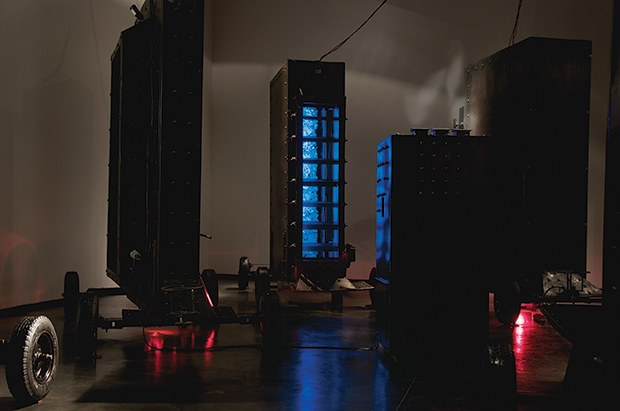
Mazumdar’s images transmute from horror to delicate abstraction, the digitally enhanced saturation and intensity of certain colours and manipulated effects of depth and texture locate the beauty in the carpet of leaves across the ground, while also amplifying the horror of the skinned and decomposing body of a calf, the series’ most arresting image. Captured in a raw red cadaver consumed by maggots, a filmic vision of horror and at the same time an organic manifestation of nature’s cycle, the duality is embodied in the four armed black skinned figure of the goddess Kali, Kolkata’s own deity of the charnel whose tantric powers are associated with corpses and the night. Her image, set against the night sky lit with crematory flames, presides over the scene, both as a real presence in the fields where devotees have sought to harness her energies over the crops, but also in a metaphysical sense through which she is the key to the understanding of the whole of Nightskin. Kali’s blackness embodies pure energy or Shakti, transcending the natural world as manifested by light and colour. Mazumdar is restrained in his use of her actual image as if in acknowledgement of the intensity of the energies at her command, yet her presence can be felt throughout, so much so indeed that a basic understanding of her attributes is almost essential to a full appreciation of the dynamics of the work.

Moving into the central gallery Nightskin assumes its most physical manifestation, a complex, arresting and deeply personal installation, so multi-layered that considerable time and attention is required to uncover the totality of its content. Giant wheeled metal trolleys fill the room, upright crates of welded black steel that look like armoured coffins or the futuristic war machines of some medieval siege. Imposing yet of indeterminate function, industrial anomalies that might be found in a munitions plant, grouped like Neolithic miners standing in some long forgotten nexus of geometric power; they are also descendants of the absurd machines of Francis Picabia and the totemic assemblages of Joseph Beuys.
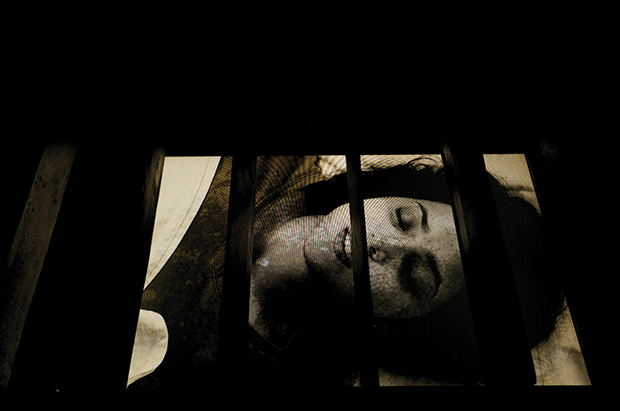
Black prevails more thoroughly in this room, no longer the black of nature’s starry skies but a more contrived device to helm the journey into metaphysical realms. The black becomes an inky portal to the memories and dreams that Mazumdar explores, some real and some imagined, conjuring a range of senses from the tactile to the auditory. As one moves through this assemblage of metallic beasts, a drama of sound and light unfolds with shutters triggered by movement sensors open to expose video screens, while a soundtrack played looped recordings of poetry and Mazumdar’s self-composed music. “He speaks truly who speaks the shade,” the line from mid-20th century Romanian émigré poet Paul Celan, locates another of Mazumdar’s influences. Celan’s poetry often engaged with the revelatory and illuminating nature of blackness.
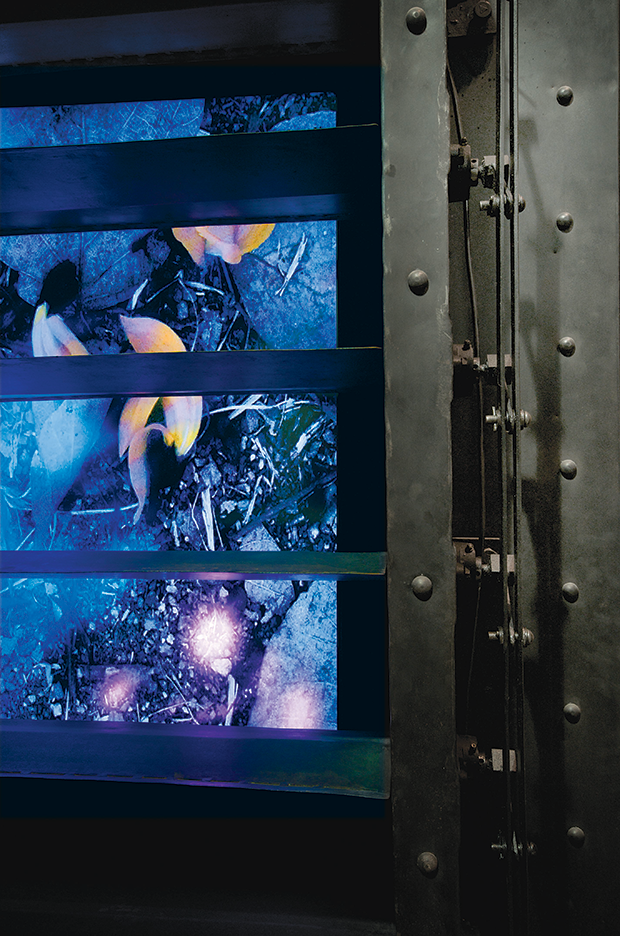
Revelation is a particularly pervasive theme of Mazumdar’s installation. Hinged doors conceal imbedded video screens, still photographs and paintings, opening up like medieval icons. Throughout the whole arrangement is the invitation to explore, to touch, to get beneath the skin and peel away the layers, the process every bit as charged as what is uncovered. Soon we are absorbed in the motifs that guide us through Mazumdar’s subconscious mind, mapping his memories with reference to whole panoply of senses. One of the boxes reveals a padded red and gold brocade interior, part boudoir, part womb. In others we look down through bars at videos of people, as if they are trapped. Mazumdar plays on the different facets of what we perceive as reality. Flowers covering one trolley and inside. Another look, real but are fake. While elsewhere, digital images of flowers further confuse our senses. In the centre of the room a crate smokes like an overheated engine which might catch fire at any moment, but close inspection reveals the smoke as vapour. Another box seems to be filled with oil which is leaking down over the steel plating, yet this apparently viscous liquid is again not what it seems.
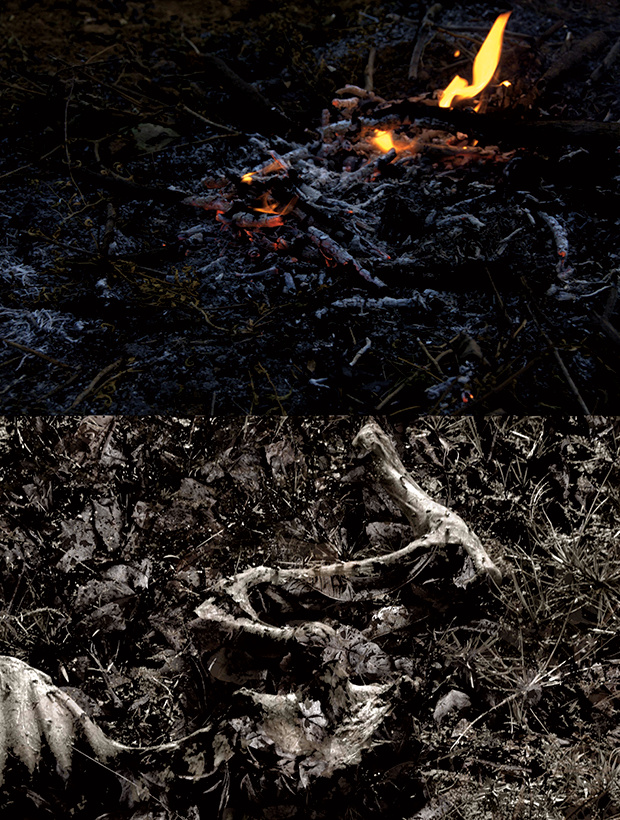
The culmination of the show is a four channel video projecting on the walls of a darkened room. Technologically impressive, this room completely immerses the viewer in sound and moving image. Surrounded by the flickering visions of the night with Mazumdar’s unsettling soundtrack washing over us we reach finally a point of complete immersion. The videos, like some of those embedded in the metal boxes, take us on further travels through the night, Mazumdar’s hand held video weaving through the roads of Calcutta recast in the sodium glare of flickering streetlights, the rhythms of this fragmented urban dreamtime conducted by the duelling beams of car headlights and the pulsing glow of shop illuminations moving trance – like between waking life and dream, dictated in the vocabulary of the night, transformative and profound, architectural logic dissolved in darkness, its many voices speaking in tongues which have no meaning in the reassuring hues of daylight, but cloaked in the thick impasto of the darkness, assume a melody all their own. Without beginning or end, this is the Nightskin.
All images are part of the exhibition ‘Night Skin’ held at 1×1 Art Gallery, 2009. Image Courtesy: Artist and 1×1 Art Gallery, Dubai.












